- Eco Housing
- Posted
Local Housing, Global Benefit

Ever since the seminal Agenda 21 was endorsed by 150 nations including Ireland in 1992, increasing lip service has been paid to sustainable development in everything from government policy to manufacturers’ claims. However, as John Hearne describes, in Tralee Town Council’s Rath Oraigh housing development, local action has been taken with not only local, but global benefits that embody the principles of sustainable development.
Viewed from the outside, Tralee Town Council’s new housing development in Rath Oraigh looks pretty much like any other. You have sixty-four housing units, plus a Crèche, together with on-street parking and two open green-spaces. The difference is on the inside however. This development stands apart from any other the local authority has built because of the range of energy saving initiatives used in its construction.
Besides a beefed-up insulation spec, Rath Oraigh incorporates ground-source heat pump for space heating, solar panels for hot-water, condensing boilers burning LPG, and a heat recovery ventilation system together with a state-of-the-art district gas distribution system. All told, these initiatives should yield energy savings of between 40% and 55% relative to current building regulations. “This was all new to us,” says John Casey, Clerk of Works with the Town Council. “We have never used them before. The entire project, everything that went into it; the gas, the geothermal, the solar panels, everything was new. In the past, we had always used traditional stoves, solid fuel and back boiler.” Fully occupied since January, project co-ordinator Willie Moynihan of Kerry County Council, working under the auspices of the Kerry Energy Agency, has been monitoring the energy aspects of the development closely over the past six months. So far, he says, things are going well. “It’s been a good education for us, but we’re delighted with the outcome. The scheme consists of one to five bedroom dwellings together with the crèche and three special needs bungalows.
While sizes may vary, the insulation was standard throughout. Kingspan high-density foilback: 50mm underfloor, 25mm around the edges, 60mm in the cavity, together with 270mm of German Knauff insulation between the joists. “The ordinary rollout insulation would have been 250mm,” says John Casey, “but the Knauff needed 270mm to reach the U value…Where the joists go into the blocks, we pointed up around those and siliconed around them then. Years ago they used to leave them open and this was a source of air leakage, now we ensure that they’re sealed.” The windows – Nordic pine from Munster Joinery – feature argon gas filled double glazing with Pilkington K low-E glass.

The council decided to use a single ground source heat pump for space heating in the seven bungalows and creche via a district hear system
When it came to heat sources, geothermal was one of the first options Willie Moynihan checked out. “We were familiar with the heat-pump in a commercial setting. We have one in the Motor Tax Building in Kerry County Council which is working very satisfactorily. This is a 1,200 square metre building which opened in 1999. We were anxious to find out how the heat pump would operate in a domestic building.” The Council decided to use a single ground-source heat-pump for space heating in the seven bungalows and crèche via a district heat system. Heat pumps operate most favourable with under floor heating due to its low temperature requirement. But it’s relatively expensive to install, particularly on first floors, hence the decision to restrict its use to the single-storey buildings. Moreover, Moynihan was anxious not to put all the council’s eggs in one basket.
“It was a major step into the unknown for us,” he says, “but we’re delighted with the outcome…In the Motor Tax Building the heat-pump is timed to operate for three or four hours early in the morning and this provides sufficient heat store in the floor slabs for the remainder of the day. We weren’t sure how that would work in a domestic situation where the heat demands are higher.…At the moment we operate the heat pump for about five hours in the morning, plus a two hour boost in the evening. We’ve installed temporary monitors to look at temperature trends in the houses during the day…So far, so good.”
“We ensured the plumber installed the pipe work (on the underfloor heating) at spacings suitable for flow temperatures of 30-35 degrees. This allows the heat pump to operate at its maximum coefficients of performance (COP).

Condensing Boilers were used in conjunction with LPG to optimise heating efficiency in the development
Ground-source heating, as the name suggests, involves the installation of a ‘collector’ in grounds adjoining the building. This is essentially a network of pipes which extracts the heat from the soil. Its size relates directly to the size of the internal space to be heated. David Roome of DC Compute Air, who installed the heat-pump for the town council, says that the Rath Oraigh site posed certain challenges.
“We used a double stacked collector because space was very tight. Basically you go down 1.8m and you lay down one set of pipes and then you come back up a meter and you lay another set.”
The seven bungalows, the crèche, plus ten additional houses also feature solar panels.
“We’ve used a very high quality solar panel from Arcon in Denmark.” says Kevin Noone of Nivektron in Galway, the company which looked after this aspect of the project.
“It’s almost like a domestic version of a commercial grade panel and the panel is the real heart of the system. We’ve coupled that then to a 300 litre storage tank for each individual house.” The Council are delighted with the performance from these panels, and even during the very cold spell in March there was a plentiful supply of hot water available.

The seven bungalows, the creche, plus ten additional houses all feature high quality 'commercial grade' solar panels as well as condensing boilers
With ground-source looking after the heating requirements for the single storey buildings, the council took the decision to install condensing boilers burning liquid petroleum gas (LPG) in the remaining fifty seven units.
“Ok,” says Willie Moynihan. “LPG. It’s a fossil fuel but it’s the cleanest, it’s the best fossil fuel available at the moment.” Used in conjunction with condensing boilers, you achieve a much higher efficiency than would be possible with conventional oil burners.
“As regards fuel consumption per unit of energy output, over the course of a year you could have a saving of up to 30% over a conventional boiler.” So says Michael Hayes of RVR, who installed the 57 Italian made Immergas boilers. A condensing boiler works by recovering much of the waste heat which would normally be expelled into the atmosphere by a conventional, non-condensing boiler. In Rath Oraigh, these boilers also incorporate a number of additional features, most notably, ‘weather compensation’. Michael Hayes again:
“They can be connected to an outdoor sensor which monitors the outdoor air temperature, then adapts their output to the severity of the weather. This means in midwinter when it’s really cold outside, the boiler will produce a high temperature into the heating system but in milder weather it will reduce the temperature of the water that’s being circulated to the heating system. The big advantage of this is that the efficiency of a condensing boiler gets better and better as the temperature of the boiler water reduces.” Additionally, a ‘hot water priority’ feature monitors water usage and temperature and bypasses weather compensation if the system requires greater power for domestic hot water needs.
When it came to installing the heating system, Moynihan ran into another difficulty.
“We spoke to the different gas providers and ok, they had a slight problem putting up tanks and setting up accounts with each house, so instead we looked into installing one central tank. To make a long story short, that’s what we ended up with.” The difficulty now was, how do you apportion gas between the different households? Flogas introduced the town council to the “PayPino smart card system. The council’s tenants prepay for gas using the smart card, allowing both local authority and household an unprecedented level of control over their energy consumption.
“It’s an ideal energy saver and energy controller.” says Moynihan. “The smart card also has an inbuilt data logger for recording daily consumption figures and trends. This allows us to investigate any complaints on high costs / consumption. When they come in to top-up their card, the computer automatically downloads all the consumption data. We have it all there on the screen and we can print it off and give it to them. The single tank allows the council to purchase the gas at reduced rate and this saving is automatically passed on to the tenants.
The condensing boilers do not however provide all the hot water requirements in Rath Oraigh. The seven bungalows, the crèche, plus ten additional houses also feature solar panels. “We’ve used a very high quality solar panel from Arcon in Denmark.” says Kevin Noone of Nivektron in Galway, the company which looked after this aspect of the project. “It’s almost like a domestic version of a commercial grade panel and the panel is the real heart of the system. We’ve coupled that then to a 300 litre storage tank for each individual house.”

The council's tenants prepay for gas using the smart card PayPino system, allowing both local authority and household an unprecedented level of control over their energy consumption
A heat recovery system installed in the seven bungalows provides necessary ventilation without compromising the insulation. “The beauty about heat recovery,” says installer Aengus O’Leary, “is as the stale air is being exhausted, the heat energy from that air is transferred onto the incoming air, and when cold air heats up, it drops in humidity. What you’re getting back into your living room is filtered clean air, pre-warmed, and a drop in humidity, which eliminates all your condensation and mildew growth in the house.” The exchanger delivers an estimated heat efficiency of between 55% and 60%.
Perhaps one of the most striking features of the Tralee development is not any individual system, but the interplay between the systems. Once the solar panels have brought the water up to the required temperature, the excess is diverted to boost the return temperature from the heat-pump collector. Ground-source works by taking the latent solar heat from the soil and boosting that electrically to bring it to a usable domestic temperature. With warmer water now entering the heat-pump, less electricity is required to bring it up to the required temperature. The heat-pump becomes instantly more efficient. “One compliments the other.” says David Roome. And if, during the winter, there’s insufficient sunlight to bring the water temperature to the required level, the condensing burners take over. “Obviously,” says Michael Hayes of RVR, “the boiler provides the central heating load but part of its function is to provide the water heating at times when the solar is incapable of doing that.”

A heat recovery system transfers heat from moist air that needs to be extracted through vents from wet rooms such as bathrooms. The heat goes through a heat exchanger before being circulated into habitable spaces
The Rath Oraigh development qualified for substantial grant aid under Sustainable Energy Ireland’s House of Tomorrow programme. At €5,000 per unit, the total grant cheque came to €320,000. Tim McSweeney of Tralee Town Council says the final costs have yet to be tallied, but believes that, taking the grant into account, the housing development won’t be any more costly than a conventional development. “There will be other savings. In our original plan, we had two chimneys and we could take out one…Ok, there was higher insulation, but there was no fuel shed, so there are bits and pieces; there’s a lot in the mix.”
Related items
-
 Kingspan up for green manufacturing award
Kingspan up for green manufacturing award -
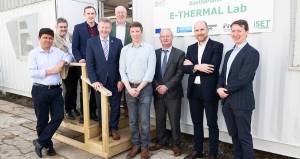 State-of-the-art heating test lab opens at GMIT
State-of-the-art heating test lab opens at GMIT -
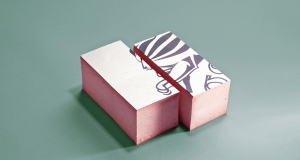 Kingspan launches new lower lambda Kooltherm range
Kingspan launches new lower lambda Kooltherm range -
 PHAI welcomes four new patron members
PHAI welcomes four new patron members -
 Kingspan’s Stormont solar array meets unique challenges
Kingspan’s Stormont solar array meets unique challenges -
 Kingspan Insulation becomes patron member of PHAI
Kingspan Insulation becomes patron member of PHAI -
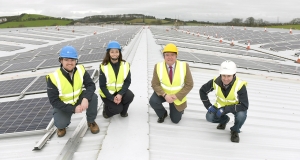 Kingspan installs Ireland's largest solar PV array
Kingspan installs Ireland's largest solar PV array -
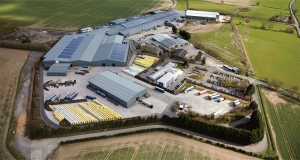 Kingspan reports sustainability success & net zero energy progress
Kingspan reports sustainability success & net zero energy progress -
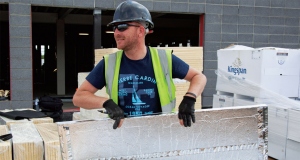 Kingspan Optim-R achieves BDA Agrément cert
Kingspan Optim-R achieves BDA Agrément cert -
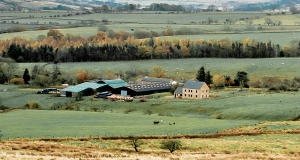 Pennine farmhouse marries traditional style with passive performance
Pennine farmhouse marries traditional style with passive performance -
 Mixed use London scheme delivers passive at scale
Mixed use London scheme delivers passive at scale -
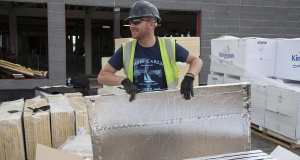 Kingspan Optim-R achieves BDA cert
Kingspan Optim-R achieves BDA cert

